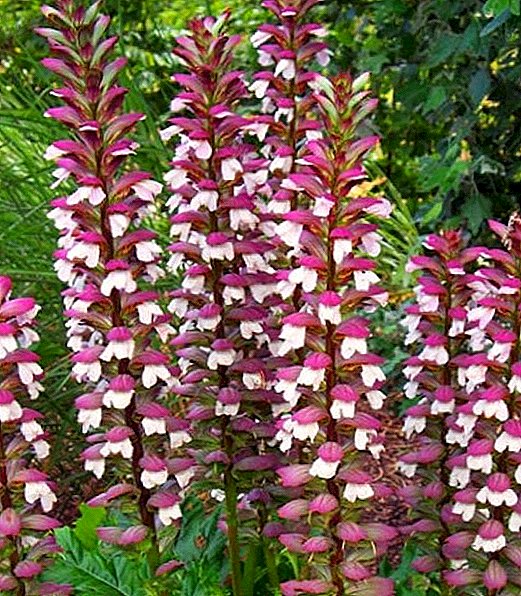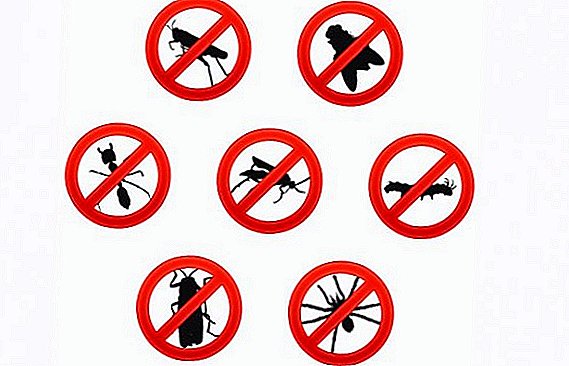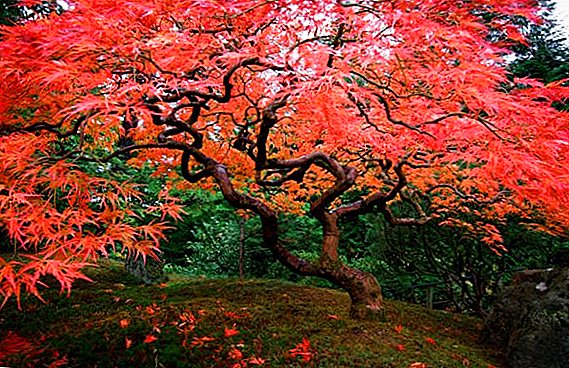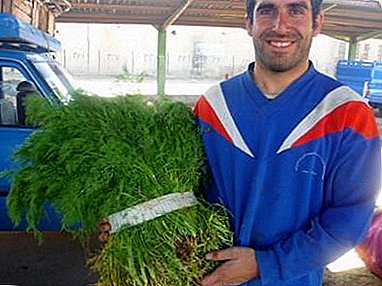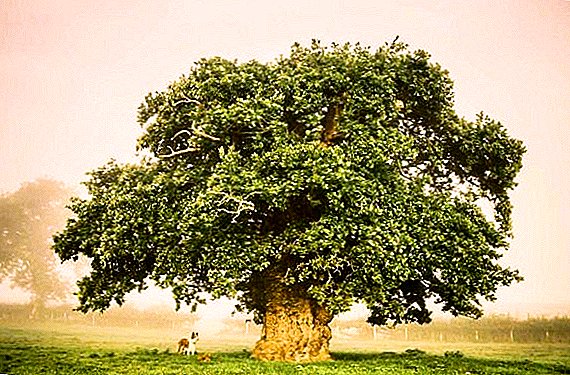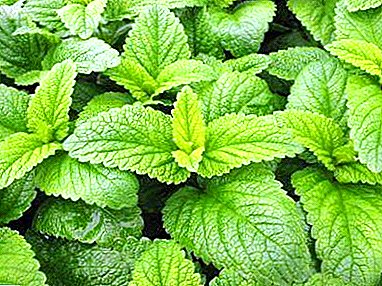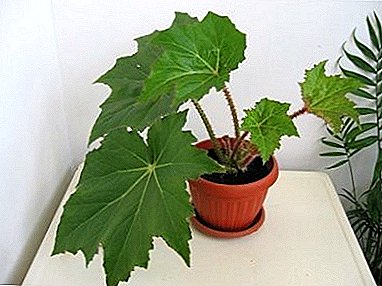
Begonia Vorotninkovaya belongs to the family Begonese, is a flowering plant. In our region, the flower was introduced in the middle of the XIX century from Mexico.
The plant is great for home decorationnearby territory. The following material is dedicated to home care for the flower.
Characteristic
The flower is a decorative medium high plant (no more than 60 cm), with a creeping thick stalk. The leaves have a light green color, angular, with a slight pubescence on the edges. A distinctive feature of the leaves of Begonia - on the reverse side can be seen red streaks.
Flowers are small, have a bright pink color, collected on the top of the peduncle. They give the plant elegance, gathering in an openwork brush of 2-3 inflorescences. An adult plant can carry up to 5 inflorescences. Begonia blooms mainly in winter, decorating the space around.
Home care for the collar begonia and photo
Few gardeners will keep from planting such beautiful plants. Appearance Begonias cuff pleases the eye on its own or in combination with other colors. The plant can be considered not only indoor, it feels great as a decoration of flowerbeds. Proper care - a pledge of longevity, beautiful appearance Begonias Vorotnichkova.
Landing
Immediately after the purchase, determine the habitat of the plant. The windowsill is best suited from the east or west. Begonia loves bright sunshinebut not direct. Follow the tips described below to make your flower always feel great, to delight all family members.
Priming
At home, you can create the perfect option for Begonia Manzhetnoy - loose, enriched with various organic substances in the soil. The flower loves the soil based on peat, a small amount of sphagnum, perlite + high-quality earth.
Pot

The flower is well rooted in moist soil. You should buy a pot so that the roots are not always in the water. Plant Begonia in a tight pot, in which there is little space for the roots, so water will drain quickly.
Watering
Water intake must be moderate. During the growth period of Begonia Collared soil in a pot - slightly moist, water as the top coat dries. This trend continues until autumn. Then gradually reduce the flow of water.
In this case, stop watering for a short period of time, allowing the plant to recover from excess moisture.
Air humidity
Begonia cuff is not choosy to humidity. In the summer, it is recommended spray around the plant, You can not directly splash on the flower itself. Another option is to place small water tanks near the Begonia. This method saves time, constantly humidifies the air around the plant.
Thermal mode

Begonia Vorotnykovaya does not like travels, drafts. The optimum temperature in summer is 20 degrees, in winter 16 degrees Celsius.
The minimum allowable temperature 15 degrees Celsius. You can not put a flower heated under the battery.
Lighting
As mentioned above, the flower loves bright, diffused light. Put the plant on the western / eastern windows. In winter, place the plant on the south side, compensating for the lack of light. On hot days, light the leaves of Begonia Manzhetnoy, especially during midday periods, avoiding plant burns.
Fertilizer / feeding
Fertilizers are considered to be a mixture of nutrients in the soil to the soil. Most often, such actions are carried out when Begonia needs additional feed (the period after the winter). Every 1-2 years change exhausted land.
Ready-made set of nutrient mixtures can be bought in the store. The packaging describes the proportions, other indications for excellent saturation of the plant with nutrients.
Lifespan
Begonia's lifespan at home varies from 1 to three years. It all depends on the care, climatic characteristics of growth.
Transfer
A large pot is needed when the entire pot is filled with flower roots. Usually transplantation is carried out twice a year. The best time for such events is spring, before the beginning of the flowering period. If you decide to transplant during flowering plants, be incredibly neat, do not damage the root part. In the same period, you can use and propagate Begonia by dividing the root system.
A photo
Next you can see a photo of the collar begonia:




Methods of reproduction at home
Multiply Collar Begonia stem, leaf cuttings or division. Cut cuttings from 3-5 leaves, sprinkled with coal, placed in a well-moistened substrate, kept at a temperature of not more than 20 degrees. Within a month, the cuttings take root, then they are transplanted into pots with the same substrate.
Pruning
Such actions are carried out to form a beautiful crown. Removing the top shoots allows lateral shoots to form an excellent crown shape. This is usually done in the spring.
Diseases / pests treatment methods

There are some of the most common types of disease, incredibly simple ways to treat them:
- Begonia drops leaves - lack of moisture in the soil, a small humidity. It is necessary to increase the intensity of irrigation + put the tank with water around the plant;
- white scurf appears on the leaves, the stem, the leaves are deformed, they dry up - the result of the fungus. Eliminate the trouble of good ventilation of the room, additional lighting, regular feeding;
- gray rot is manifested by the defeat of flowers, shoots, leaves - a fungal disease. Eliminate the disease will help the timely removal of the affected areas of the plant, treatment with fungicides (can be purchased at a flower shop), sprayed once a month.
Begonia cuff - an unpretentious plant, has a pleasant color, pleases the owners with beautiful pink flowers. Flower care is simple, follow the simple rules described above.



